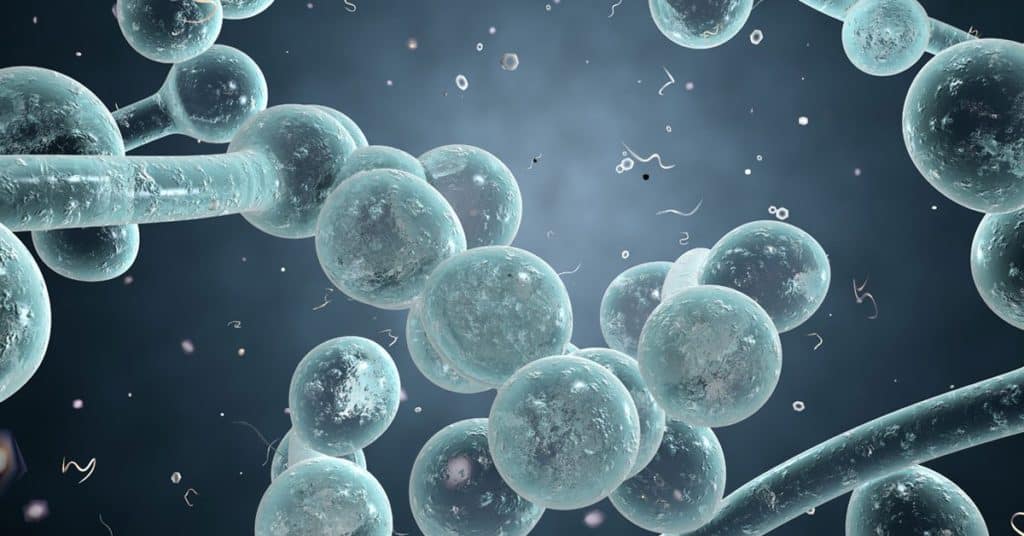What is candidiasis?
Candidiasis is a fungal infection caused by yeasts that belong to the genus Candida which has hundreds of species. Many of these species can cause infections in humans and the most common strain is Candida albicans.
Candida generally lives inside the body in areas such as the gut, mouth, throat, vagina and on the skin often without causing any serious problems. Candidiasis that develops in the mouth or throat is called thrush (oropharyngeal candidiasis) and in the vagina is commonly referred to as a yeast infection.
The overgrowth of Candida yeasts can cause serious infections and may enter deep into the body through the gut membrane (leaky gut syndrome) and other vulnerable areas. Invasive candidiasis occurs when Candida species enters the bloodstream and affects critical internal organs like the kidneys, heart and brain. This invasion of the fungus can pose serious health problems and discomfort. Unfortunately misdiagnosis is very common as symptoms can be similar to other conditions.

The CDC claims candida infections pose a serious global threat
According to the CDC (Centers for Disease Control and Prevention) the Candida auris species is an emerging fungus that presents a serious global health threat. Healthcare facilities in several countries have reported that C. auris has caused severe illness in hospitalized patients. C. auris is often resistant to multiple anti-fungal drugs.
Common symptoms of candida overgrowth
- Tiredness and fatigue
- Strong sugar and refined carbohydrate cravings
- Difficulty concentrating, poor memory, lack of focus, ADD, ADHD, and/or brain fog
- Irritability, anxiety, mood swings and/or depression
- Recurrent urinary tract infections
- Digestive issues
- Sinus infections
- Nail fungal infections
- Skin conditions such as eczema, psoriasis, hives, and rashes
- Severe seasonal allergies or itchy ears
- Joint pain
Factors that can lead to candidiasis
- Leaky gut syndrome
- Antibiotics
- Microbiome imbalance
- Refined sugars
- Alcohol intake
- A weakened immune system
- Taking oral contraceptives
- Diabetes
- High stress levels
- Poor diet
What are bio-films and why they matter?

Bio-films are formed in many areas of your body such as your gut, mouth and skin. A simple explanation of a bio-film is a community of microorganisms that create a film that helps them be more resilient to stress and survive longer. A common example of a bio-film is dental plaque.
The reason that bio-film formation is becoming a serious concern is that these fungi and bacteria that form this barrier are more resistant to antibiotics, anti-fungals and other major pharmaceuticals.
Years of data and clinical research has established that bio-films, both bacterial and fungal, have been implicated in a variety of health conditions. The National Institute of Health (NIH) has stated that bio-films accounted for over 75 percent of microbial infections in the body.
Candida bio-films are becoming clinically important due to inappropriate, misuse and/or overuse of broad spectrum antimicrobials that are ineffective against these stubbornly resistant bio-films.
Many pharmaceuticals are susceptible to bio-film resistance. Amazingly, studies demonstrate that fulvic acid’s benefits are not affected by these bio-films as with common treatments and effectively produces positive results in spite of this formidable bio-barrier.
Fulvic acid exhibits potent anti-fungal activity that fights candida
A 2012 study conducted by UK researchers on a range of about 50 clinical candida strains demonstrates fulvic acid’s potent ability to fight candida overgrowth and infections.
This study shows that fulvic acid was the most effective solution compared to four common anti-fungal agents, followed by caspofungin, amphotericin B and voriconazole.
Fulvic acid was shown to effectively destroy candida overgrowth and be effective against both planktonic and sessile cells for all strains, whereas the existing anti-fungal agents exhibited increased resistance to bio-films.
What is fulvic acid and where do you get it?
Fulvic acid is a naturally occurring organic compound found in special deposits around the world. Some of the richest deposits are found in Canada, Himalayas, Hungary and New Mexico. It was once abundant in our food supply when the Earth’s topsoil was still fertile and healthy, but is now barely detectable in our produce. It has the remarkable ability to reboot your digestive system and increase your immunity by providing over 80 beneficial nutrients such as probiotics, probiotics and trace minerals. It has been scientifically demonstrated to treat many conditions including candidiasis, leaky gut syndrome, mineral deficiencies, Alzheimer’s, and chronic inflammation.
The multiple use cases for fulvic acid and its impressive performance has got big pharma looking. Pharmaceutical companies have been trying to replicate fulvic acid in the lab for decades, but because of its complex structure, it has not yet been successfully synthesised. Without a proprietary synthesis, it cannot be patented. Replicating nature isn’t easy. The good news is fulvic acid will remain a natural health product (for now).
There are only a few genuine nutraceutical grade versions of fulvic acid on the market. One of which is AEON, a purified version sourced near the Canadian Rocky Mountains. This NHP (natural health product) has caught the attention of several prestigious universities around the world for its unique formulation and purification process. AEON is the focus of several ongoing scientific studies to further validate its efficacy in treating many common, chronic and sometimes debilitating conditions.
AEON is a simple to take daily supplement containing 100% purified and nanoparticulized fulvic acid. It’s most popular delivery system is the concentrated version that comes in a dropper bottle. Just 10-20 drops in your beverage of choice and your done.











